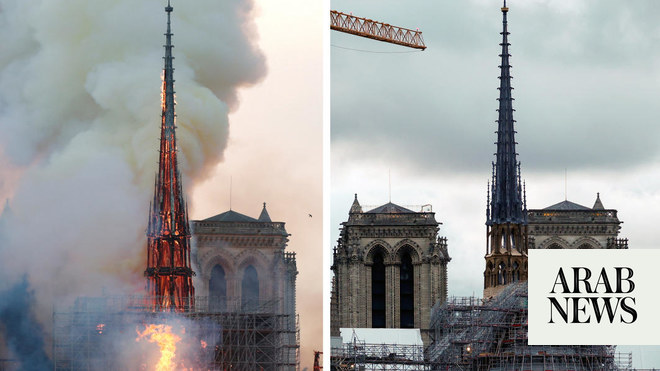
Back in 1890, the psychologist William James famously described a baby’s first experience after birth as a “blooming, buzzing confusion.”
That colorful phrase also aptly characterizes the world we live in today — loud, frenetic, volatile, unpredictable and so incredibly overwhelming that adults as well as newborns can’t help but be confused by it all.
In such a tough world, it is natural to take solace in the precious few things that are predictable and reassuring — those things we can always depend on being where they have always been and doing what they have always done. These are, in effect, the few items and ideas that we can get away with taking for granted.
This is why Paris’ famed Notre-Dame Cathedral going up in flames is so difficult to process.
Fortunately, it could have been so much worse. No one died or was injured. No valuable relics were lost. The damage, while serious, could have been much more acute. And the French government intends to rebuild the cathedral within five years.
And yet there is still a sense of trauma and disorientation when trying to process the images of the burning cathedral we saw on our phones and televisions screens — and, in the case of the shocked Parisians who flocked to the site of the fire, right in front of our eyes.
Notre-Dame was predictable in the most fundamental sense of the term. For hundreds of years, it sat majestically on the Ile de la Cite, even while so much changed around it. Everyone assumed it would always be there because it had already been there for so long — surviving several scares over its long history, including during the French Revolution, when people stormed the cathedral and destroyed some of its statues. It also survived both world wars.
Everyone who has lived in Paris, myself included, has memories and stories of walking around inside and outside Notre-Dame, of seeing it from various parts of the city — and recognizing it as one of the most famous landmarks in a country chock-full of them. It was everywhere and was always there. When we had family and other guests visit us in Paris, Notre-Dame was so often the place we would be asked to take them first.
That the structure was rife with so much historical, architectural, literary and religious significance makes the fire even more difficult to process.
When thinking about the conflagration that destroyed the cathedral’s roof and toppled its spire, one is reminded of another tragic case of destruction being inflicted on an iconic structure: The bombing, by the Taliban, of the famed Buddha statues in the Afghan province of Bamyan in early 2001.
To be sure, this is not a fair analogy. The Buddha statues, which were constructed in the 6th century, were completely destroyed and are yet to be replaced; Notre-Dame will be rebuilt. Additionally, the Buddha statues were maliciously targeted by extremists, first with tanks and artillery and then with explosives planted by prisoners of the Taliban. The Notre-Dame fire, according to all indications so far, was caused by an accident that may have been connected to oAnd yet, in Paris and in Bamyan, something so sublime and sacred — and seemingly permanent — was suddenly taken away.
After the US-led intervention ousted the Taliban from power in late 2001, pressure mounted for the statues to be rebuilt. However, that still has not come to fruition.
Nonetheless, the world, undeterred in its determination to somehow bring those statues back, persisted. And, in 2015, they returned — in virtual form, thanks to three-dimensional light projection technology donated to Afghanistan by a Chinese couple. The images were projected on to the same cliffs where the actual statues once stood.
These innovative efforts to recreate the Buddha statues underscore just how vital those cherished artifacts were, and just how far humanity is willing to go to restore them in some way.
This all suggests that the French will do everything possible to reconstruct their fallen landmark, even if it takes longer than the five years — an admittedly ambitious timeframe — promised by Paris. “We now have to get things done,” President Emmanuel Macron declared in an address to the nation. “We will act and we will succeed.”
And yet, even though Notre-Dame can and will be repaired, there is something that can never be replaced: Its embodiment of predictability and constancy — the centuries-old Parisian icon that was always there and would always be there, despite a series of scares over time, and that provided a semblance of reassurance to Parisians and to us all.
Indeed, the flames that brought down part of a seemingly immutable cathedral are a sobering reminder that the world is just so utterly unpredictable — and truly a “blooming, buzzing confusion.”ngoing renovations.












